Friday 04.06.18
Blessed Avenue
Escapism and autobiography meet in Jacolby Satterwhite's new show.

In his latest exhibition at Gavin Brown’s Enterprises, artist Jacolby Satterwhite takes everything to the next level, literally. Entitled Blessed Avenue, the visually stunning three-piece installation reflects his trademark use of 3D animation and themes of gestation, sexuality, and identity. Satterwhite renders an intoxicating vernacular of realism and fantasy starting with a 30-minute animé that takes us on a virtual journey through scenes of BDSM, avatar-inspired domination, and even a cameo by Lola Ciccone.
But Blessed Avenue is as much commemorative as it is affirmative. The exhibit pays homage to Satterwhite’s late mother — Patricia — who suffered from schizophrenia, and uses her stirring vocal compositions as well as a sample of the vast collection of her drawings. You bear witness firsthand to Patricia’s complex mind at work. This all while simultaneously delving deeper into his own wells of experience and Satterwhite re-imagines a fantastical alternate universe to state, rather convincingly, his status as an artistic provocateur.
Designed with stylist David Casavant, the exhibit’s accompanying merchandise store is as much a cheeky statement on consumerism as it is the artist’s manifestation of his mother’s dream realized. Sending illustrations of inventions to the QVC in hopes of monetary prizes, Satterwhite channels his mother’s aspirations of wealth into a boutique brimming with everyday objects for sale — cooking aprons and calendars baring Patricia’s likeness, impeccably dressed miniature Jacolby dolls, lotion, fans, and even lunch boxes grace the shelves of “Pat’s” 21st century boutique.
I sat down with Satterwhite to discuss his artistic process, how escapism informs his work, and what advice he gives to aspiring young gay artists. …

Monday 04.02.18
Jonathan Lyndon Chase’s Quiet Storm at Company Gallery
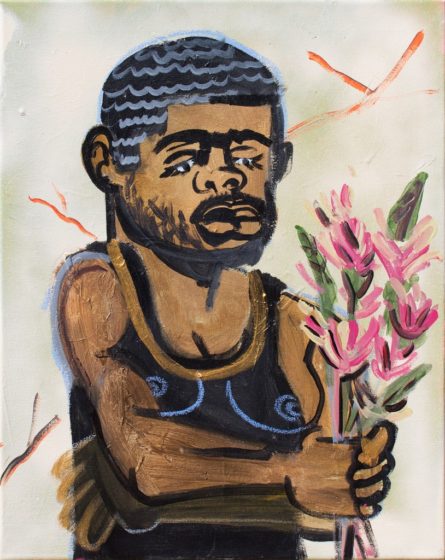
I was introduced to Company Gallery through Troy Michie — the brilliant collagist featured in GAYLETTER Issue 8. His very first solo show — Fat Cat Came To Play — was picked up by the gallery soon after some of his collages found themselves on exhibition in the New Museum’s well-received Trigger: Gender As a Tool and a Weapon.
I’ve since been kept in the loop with the gallery and was stoked to see they’re keeping it progressive and exhibiting works by younger artists making strides within their medium. Jonathan Lyndon Chase uses paintings and drawings as a means to explore black homosexuality and queerness, and the many illustrious formations bodies take when placed together in space. His works include point-blank homo-erotics, and various states of sensuality, however I want to point out that intercourse is never completely at play. While the bodies Lyndon Chase works with are sexualized, he delves into the poetry of conversation surrounding what a black queer body can do by placing them into scenes typically unseen: black men with flowers or black men kissing each other.
Chase focuses on the intimacy and the visceral qualities found within the everyday and as a result creates dialogues about the complexities surrounding gender, sexuality and race. In the show’s foreword by filmmaker Tiona Nekkia McClodden, she writes “[Chase’s] figures mirror each other, touch each other… and reach through each other… Lovemaking, or rather loving oneself is like this.”
12:00PM-6:00PM, Wed-Sun, 88 Eldridge St. …

Thursday 03.29.18
AN INCOMPLETE HISTORY OF PROTEST
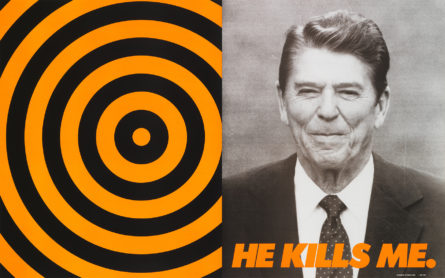
I received a lovely text the other night from Chris Stewart (our managing editor) saying that he had arranged for a press visit to the Whitney Museum of American Art. We went for the Grant Wood and Zoe Leonard exhibitions, but one does not simply go to the Whitney and not check out every floor. We started at the top and worked our way down. The Wood show was a funhouse experience, and the Leonard was one of detailed thoughts.
But what stood out to me was the 6th floor, “An Incomplete History of Protest.” This show “looks at how artists from the 1940s to the present have confronted the political and social issues of their day. Whether making art as a form of activism, criticism, instruction, or inspiration, the featured artists see their work as essential to challenging established thought and creating a more equitable culture.” Of course there’s no way a museum can provide a whole account of the history of protest — it goes back forever and it will go forward forever, but the show is viable proof that artists “play a profound role in transforming their time and shaping the future.”
In various forms, there is art protesting the AIDS crisis, the war in Vietnam, racism, abuses of power, sexism, and the Whitney itself. In several rooms full of affecting work, it becomes clear that the show is much more than the sum of its parts. It’s a profoundly moving experience that needs to be felt in person. …

Sunday 03.18.18
NOTHING PERSONAL – DORON LANGBERG
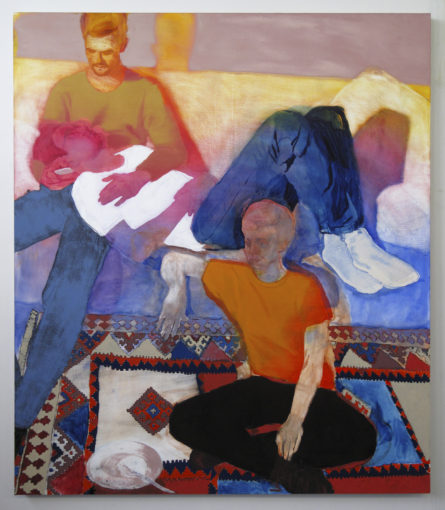
I found out about this painting show because a friend DM’d me on Instagram sharing Doron Langberg’s work, which she prefaced with: “Some gay art.” Sometimes simplicity is best. Named after James Baldwin’s 1964 essay Nothing Personal, Langberg’s first solo show in New York (though he has been exhibited widely) is a observational amphitheatre, showing off the Brooklyn-based painters talent for material, color, the situational and a clear joy of painting. I say situational because only on very particular occasions will an anus dilate, and that’s usually after penetration. In “Josh,” the canvas I’m talking about, Langberg uses peachy-cream colors and other caucasian tones to deepen the context of the post-coital fetish. He clearly cares deeply about this used hole. The power of this particular canvas — and the rest of the show — is that what is clearly homoerotic (to the umpteenth degree) reconstitutes itself within the figurative conversation.
Langberg, who uses his friends and family for models, doesn’t dwell inside what is clearly his blatant homosexuality. Sure, these are classic poses of ejaculation or the post-coital, and I’m definitely gay because I love them, but I didn’t once think I had to take this dick, or that hole into any grand context. I know I just spent this whole article talking about the phallus, and that says a lot in itself, but Langberg is a really fucking good painter, he just happened to use everyone’s favorite art history symbol to show that off. The show runs through April 22nd. …

Thursday 03.08.18
Peter Hujar: Speed of Life
A timely show at the Morgan marks the late photographer's raw talent.
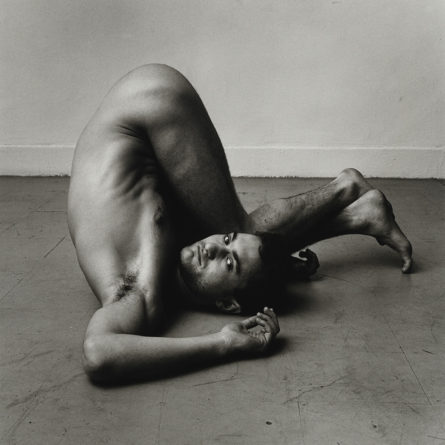
Peter Hujar: Speed of Life, now on view at the Morgan Library and Museum, confirmed what I already knew about the late photographer Peter Hujar and taught me a lot more. In 2013, the Morgan became a repository of Hujar’s collection, including 100 photographs, his correspondence, other ephemera, and over 5,700 contact sheets from publications. 160 photographs are exhibited in Speed of Life — curated by Joel Smith — from private collections and the Morgan’s recent acquisition.
The opening text explains Hujar was nearly penniless when he was photographing, that he died of AIDS related pneumonia on Thanksgiving Day 1987, and was famously intertwined with the East Village luminary David Wojnarowicz. (Wojnarowicz created now iconic photographs of Hujar immediately following his death, but as my friend noted, “Isn’t it a little sad their names might never be found without the other?”) It’s good that this canonized information gets out of the way early because Hujar’s work doesn’t appear to be hung up on anything autobiographical. Speed of Life is a competent introduction to the artist and his many approaches to making images.
It’s very easy to step into Hujar’s eye. He doesn’t introduce any profound themes in his photographs; Hujar was an artist not in search of any great answer but perhaps just was prone to feeding that capricious thing called inspiration. Though his style and subjects are not necessarily the most discerned (save his uniform, square compositions), I admired his amalgam of interests — it seemed genuine, like photography was obviously something he was born to pursue. …

Tuesday 03.06.18
GUY BOURDIN’S UNTOUCHED, A PHOTO BOOK
A new monograph reveals Bourdin’s precocious vision
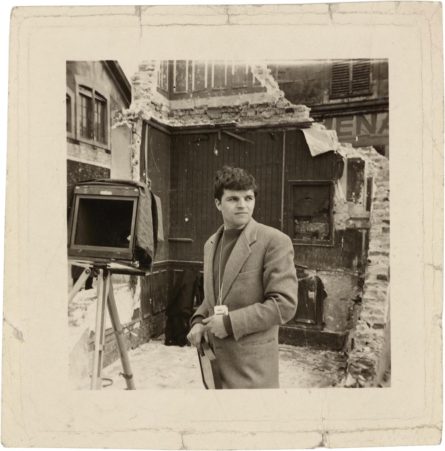
“Better 5 minutes of happiness than a lifetime of conformity.“ So opens Guy Bourdin: Untouched, a recently-released monograph uncovering work from Bourdin’s formative years. Each photograph in the book was created during the crucial period between 1950, the year of his first exhibition, and 1955 — the year that marked his entrée into fashion photography. (He was published simultaneously in Vogue Paris and Nouveau Femina.) Bourdin is perhaps best known for his surrealist-inspired, ultra-stylized, highly saturated narrative fashion editorial work that peaked in popularity during the 1970s.
During his fashion years, Bourdin didn’t conform to the style of the magazines he was commissioned for. His unique perspective as both an artist and a working photographer led to collaborating with and shooting for Harper’s Bazaar, Chanel, Issey Miyake, Versace, and Charles Jourdan, among others. Bourdin’s vision and execution alone set him apart from his working contemporaries.
This unique perspective of Bourdin’s — the push and pull of emotion and precision, the tension of artful documentary versus documentary art, an avant-garde tinge to layered imagery — didn’t come out of nowhere. It was an inherent trait, but wasn’t always apparent inside of his photography. With Untouched, his perspective becomes much more clear, transitioning from often-casual, sometimes-serendipitous photographic observations to precise, controlled studio portraiture. Untouched catalogs a young photographer — just out of the Air Force — beginning to find himself.
One of the first things I learned in my first photojournalism class in college was the idea of a “moment” —referring to the decisive moment, a concept popularized by Henri Cartier-Bresson — and how to capture that. …

Saturday 03.03.18
TOF STORE: TOMORROW’S MAN AND JACK PIERSON ART PRODUCTS
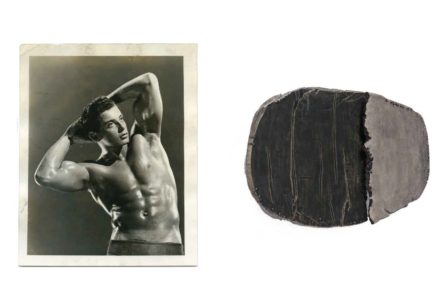
The result of being affiliated with the country’s premiere LGBTQ arts outlet and also having a friend put my damn email on the Gucci PR blast, I get a mix of bullshit in my email. Sometimes, I get brilliant ones. We like to think it’s the result of someone who is actually doing their job, and the Tom of Finland Store always knows the best of gay culture. Their most recent pitch didn’t disappoint. Jack Pierson’s photography has always blended the indelible tones of camp with unabashed complacency — photos by Pierson are traditional in a compositional sense and often highlight beautiful men, so you can see why he shot the cover for GAYLETTER Issue 1. (He also makes sculptures and mixed-media).
“Following the critically acclaimed online exhibition Bruce Labruce: Faggotry, Tom of Finland Store is thrilled to present JACK PIERSON: TOMORROW’S MAN, an online retrospective of the artist’s ongoing series of publications Pierson has developed in collaboration with contemporary artists. TOMORROW’S MAN takes viewers on a dizzying visual journey encompassing the full spectrum of cultural references combining archive material with contributions from selected artists, illustrators and writers. The online platform provides a mesmerizing web-adapted overview of the publications to date, an insight to Pierson’s intimate photography and the community of artists he surrounds himself with.”
It launched on Friday, March 2nd, see a preview below.
Then, go ahead and browse the works…
…

Tuesday 02.06.18
The Savage Ranch Residency
A judgement free space where sexuality and freedom of expression is encouraged.
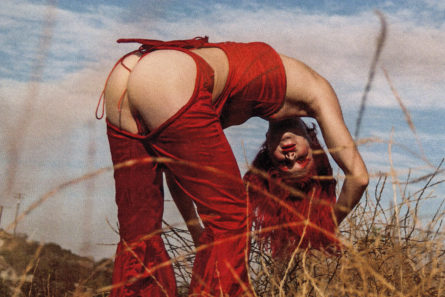
Love Bailey is an artist of many mediums. Her most poignant work seems to be life itself. On Instagram, she markets inclusion to the highest degree, monologuing through her Instagram-stories and offering advice to live a more open, love-filled life. Her bio reads: “I’m not afraid of my Shenis.”
Besides styling, creative directing and hosting/throwing a number of lavish cabaret-style parties in Los Angeles and New York, she has recently begun a residency program at her coveted and enigmatic Savage Ranch. Sprawling over 45 acres of land, the Savage Ranch Residency is open to artists of every medium: From painting, to sculpture, to performance, to design. Her very first resident was Sinead O’Dwyer, a fashion design student from London exploring everyday perceptions of the body through one-of-a-kind pieces patterned for individual bodies.
“The Savage Ranch Residency is an opportunity for artists to come explore a ranch outside the concrete jungle and get in touch with nature,” Love told me over e-mail. “We offer a judgement free space where sexuality and freedom of expression is encouraged. With 45 acres of land, 7 horses, 4 pigs, chickens, lesbian construction workers, and a weed farm, we offer an experience that is different from anywhere else. We are dedicated to making this ranch a utopian fantasy by giving artists a safe space to create.”
Photographed by Max Runko, Sinead and Love modeled the pieces made over the two-week residency. Sinead offered her own words on the experience for those who want to learn more about their experience. …



